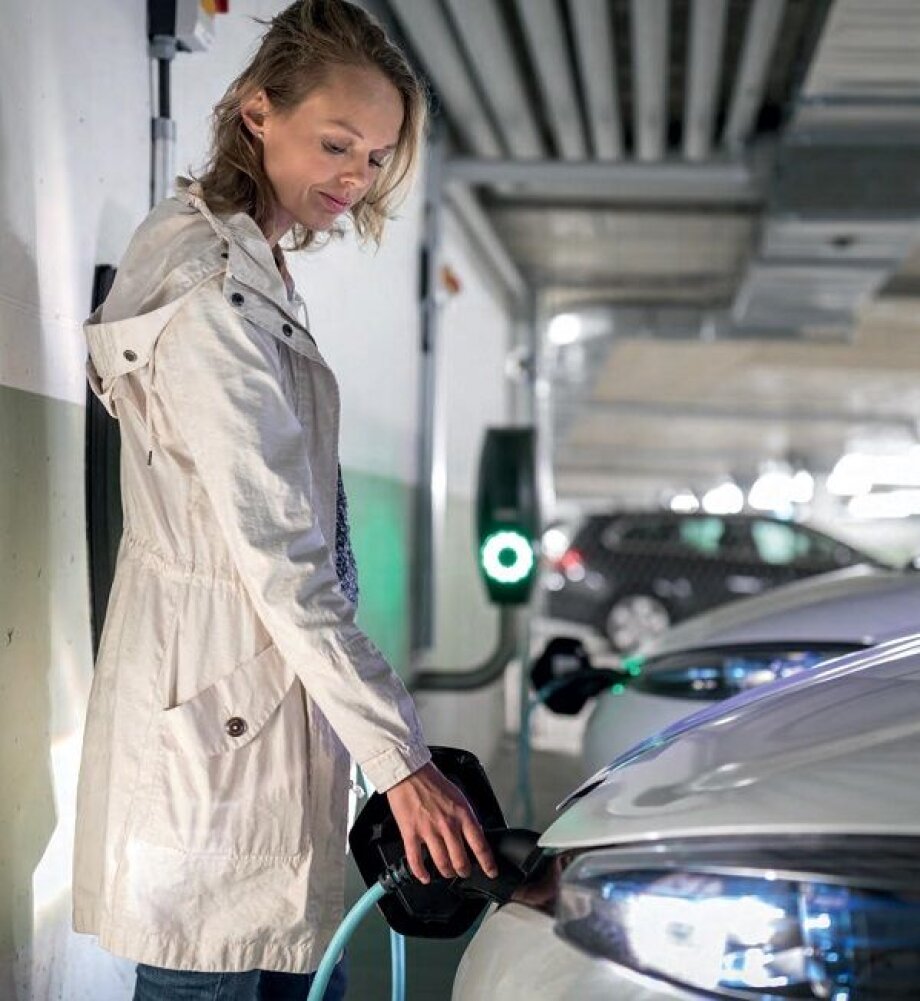E-Vehicle market grows
As plug-in hybrids drive Polish e-mobility in July, more factors cause the market to grow By ALEKSANDER RAJCH

As plug-in hybrids drive Polish e-mobility in July, more factors cause the market to grow By ALEKSANDER RAJCH

More plug-in hybrid vehicles than BEVs were registered in the last couple of months in Poland. This trend was also discernible in the first half of 2021 in other EU nations, such as Germany, Spain, and Italy. BEVs are still bought more often, however, in the Netherlands, France, and the UK. For Poland, these numbers are most probably an effect of a richer model portfolio available for the market (82 PHEV against 68 BEV models) as well as the under-developed EV charging infrastructure.
‘MÓJ ELEKTRYK’
Many companies had also put their plans for fleet electrification on hold in anticipation of the “My Electric” (in Polish: “Mój Elektryk”) subsidy program which was initiated in July 2021 by Poland’s National Fund for Environmental Protection and Water Management (NFOŚiGW). Most of those factors will probably be transitive and will not suspend the development of e-mobility overly. The challenge of providing EV users without private charging with access to public charging still stands though and it slows the sector down.
The expansion of the Polish sustainable transport sector can be observed in the numbers presented by the E-Mobility Index run by the Polish Alternative Fuels Association (PSPA) and Polish Automotive Industry Association (PZPM). According to this source, 28,301 personal vehicles with an electric powertrain were registered in Poland at the end of July 2021. This means that in the first seven months of 2021 their number grew by 9,565, which represents 134% more than the same period in 2020. Only 48% (13,606) of those vehicles were BEVs or fully electric cars. To confirm the leadership of PHEVs in the Polish electric car park, 14,695 of this type of vehicle drove on Polish roads at the beginning of August. There are also more electric mopeds and motorcycles, with 10,984 at the end of July.
UNDENIABLE GROWTH
Interestingly, there is a visible growth of utility and service vehicles (also delivery vans), as there are now 1,034 such units. Poland also continues to be the leader in terms of its e-bus fleet, with 554 units. Since January, this number has increased by 122 zero-emission vehicles. In the same period of last year, 106 e-buses were registered, which shows a growth of 15% year-on-year. Hence, data shows that despite the harsh reality of the pandemic and less use of public transport, local authorities and municipalities still uphold their determination to acquire and introduce more e-buses to their fleets. The double growth in the numbers of utility and service vehicles also falls into that positive pattern. These latter numbers indicate that delivery and transportation providers are increasingly more involved in fighting air pollution in Polish cities.
The growth of the e-mobility market in Poland is also much dependent on the development of the EV charging infrastructure. According to the E-Mobility Index, there were 1,557 public charging stations in Poland at the end of July (which constitutes 3,037 charging points). Overall, 32% of these were DC stations and the remaining 68% were AC stations with a power capacity at 22kW or lower. In July alone, 36 new public charging stations were launched, giving 73 new charging points. The EV charging infrastructure, similar to the EV car park, is at an early phase of development but the environment surrounding e-mobility as the 2021 summer vacation draws to an end is becoming more dynamic.
MONEY MATTERS
As mentioned above, the Polish government launched the “Mój Elektryk” program which will significantly influence the growth of the car park and hopefully the charging infrastructure will follow. The subsidy will be available at PLN 18,750 gross for individuals who are not entrepreneurs. PLN 225,000 gross is the maximum amount for vehicles to be bought within the parameters of the program. This last number is not binding for holders of the “Big Family Card” (“Karta Dużej Rodziny”). The subsidized vehicle cannot be resold for a period of 24 months from the day of purchase. This point clearly shows the lessons from earlier pilot programs were well-learned.
The program will also be available for business and institutional stakeholders, as well as encompassing the vehicle categories M1, N1 as well as L1e to L7e. For M1 vehicles, business and institutional stakeholders will be able to acquire a subsidy of PLN 18,750 (or PLN 27,000 if the mean annual mileage exceeds 15,000km). Most importantly though, the new program is available also for those consumers who already bought an EV. The program will also be available via leasing and financing solutions, with the support of institutions cooperating with NFOŚiGW. The subsidy will also be available for more than one electric vehicle. This step is very important for the market but of course, it has to be supported by further policy. Signals that policies regarding the development of zero-emission transport will drive ambitious targets are already coming from the EU. In July, the European Commission (EC) announced the “Fit for 55” package proposal. Out of the many very significant elements of the presented legislation concepts, the electric road transport sector was very excited to see the ICE phase-out goals (including but not limited to the ban for ICE registrations after 2035) and the extension of the ETS over road transport. The change of AFID (Directive 2014/94/EU of the European Parliament and of the Council of 22 October 2014 on the deployment of alternative fuels infrastructure) into AFIR, by making it a law is also a very important step, by making the targets and legal parameters binding for all EU member states. For Poland and other CEE countries, this is an impulse for quicker and more ambitious political action to eradicate traditional mobility from the transport sector. This is because the targets presented by the proposal of the EC are distant for this part of Europe while being closely achievable national policy targets for many countries from Western and Northern Europe.
For e-mobility to become a reality, the entire EU must develop it at the same pace. The numbers, data, and upcoming EU legislation show that Poland has a high chance of catching up with the quickest pace in the near future.
 The Polish Alternative Fuels Association (PSPA) states that it is the largest, fully representative industry organization, which promotes zero- and low-emission technologies in transport in Poland. Aleksander Rajch is the director for external relations and board member at PSPA.
The Polish Alternative Fuels Association (PSPA) states that it is the largest, fully representative industry organization, which promotes zero- and low-emission technologies in transport in Poland. Aleksander Rajch is the director for external relations and board member at PSPA.